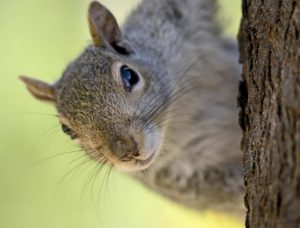The Invaders In My Attic
The past week has been absolutely glorious as fall has made its beginning debut! The mornings have had just a touch of cool while the afternoons have been warm and near perfection. My favorite season is approaching!
But there are others in the insect and animal world who are also noticing the changes in the air, and they are preparing for a new season right along with their human neighbors. The question is this? Will your woodsy neighbors become unwelcome guests for the coming winter season?
For the next few articles, we will be exploring just “who” might be knocking on your door any time now…
Just as you’re about to doze off, you hear scurrying, scratching, scampering, and maybe a rolling sound. What is that all about??
If you hear these sounds, it is quite possible you have visitors in the form of squirrels. And honestly, most people are like me and probably think it’s no big deal. They are really cute. In fact, I had a pet squirrel as a kid. Yes, I did! His name was Petey. As it turns out, his mom was …well, umm…lost her life in a tractor accident when my Dad was plowing the garden. So we adopted young Petey and raised him to adulthood. I loved that little guy! I tried hard to get him to let me pet him and climb on my shoulder. It did not work. And after escaping the confines of his cage, which was located in the kitchen (God bless my Mama), he became more pest than a pet. It was time to release him to the wild, and we did. Precious memories of childhood but I learned that squirrels really don’t make good pets. So I’m just saying…don’t try to keep the squirrels. Okay so now that you know, let’s move on.
The first step is to be sure your visitor is indeed a squirrel. You can’t really fix a problem if you don’t even know what the problem is. As mentioned earlier, you will hear noises like scratching, rollings (their nuts around), chewing, and scurrying. It is common to hear these at night since the house is quiet and you are more attentive. The sounds can come from the attic or crawl spaces. Another squirrel infestation sign is teeth marks in your wood, damaged wires that have been chewed, and maybe even air vents that show signs of chewing. You might also find paw prints. Their front paws have four toes and the back have five. Water damage on walls and ceilings from outside weather coming in through chewed holes could be a sign of squirrels and lastly a bad odor from squirrels that could have gotten trapped in an area and died. Yep, that happens.
So now you’ve determined that squirrels are a likely culprit, you are probably ready to find them and get them out. Here is a caution…mama squirrels will protect their babies so use extreme care when dealing with wildlife. Better yet, call a professional pest control and wildlife company. In the winter months, squirrels want to find a warm place to nest and have their family. Nests are usually made of things like cardboard and leaves or maybe insulation. The most likely times for baby squirrels to be present is February through May and then August through October. If there are babies present, it is best to wait for them to grow big enough to get out on their own. Canton Termite and Pest Control locates the nest and relocates it with a live trap. We do this by installing a one-way cage near the squirrel’s nesting area. This requires investigation and planning by a knowledgeable wildlife technician. Trapping squirrels requires more than one trip, so this can be a little more expensive than basic pest control. Once trapped, the squirrels are taken to a safe location at least five miles away. Now that the squirrels are gone, it is time to move to the next step.
The squirrels found a way into your home, so now it’s time to make sure they don’t find it again. Locate and seal any openings to your homes such as eaves, siding, and roof vents. Stainless steel mesh is an example of a material used to seal an area since chewing is inevitable when it comes to squirrels…it’s kind of their “thing”. Trim back any trees that make it easy for squirrels to jump right over to your home. Usually, more than five feet away is okay. In the fall and winter, keep bird feeders away from your home and nearer the woodline. Squirrels love bird food so a bird feeder near your warm attic is basically dinner and a movie advertisement for the squirrel world. Don’t invite them in!
So there you have it, squirrels in the attic episode one.
- Determine your problem
- Locate the nest (research if it is the baby season)
- Relocate the squirrels (professional is best)
- Seal holes to prevent future problems
If you have noises in the attic, give us a call at 770-479-1598. Canton Termite is ready when you are!
By: Robin
